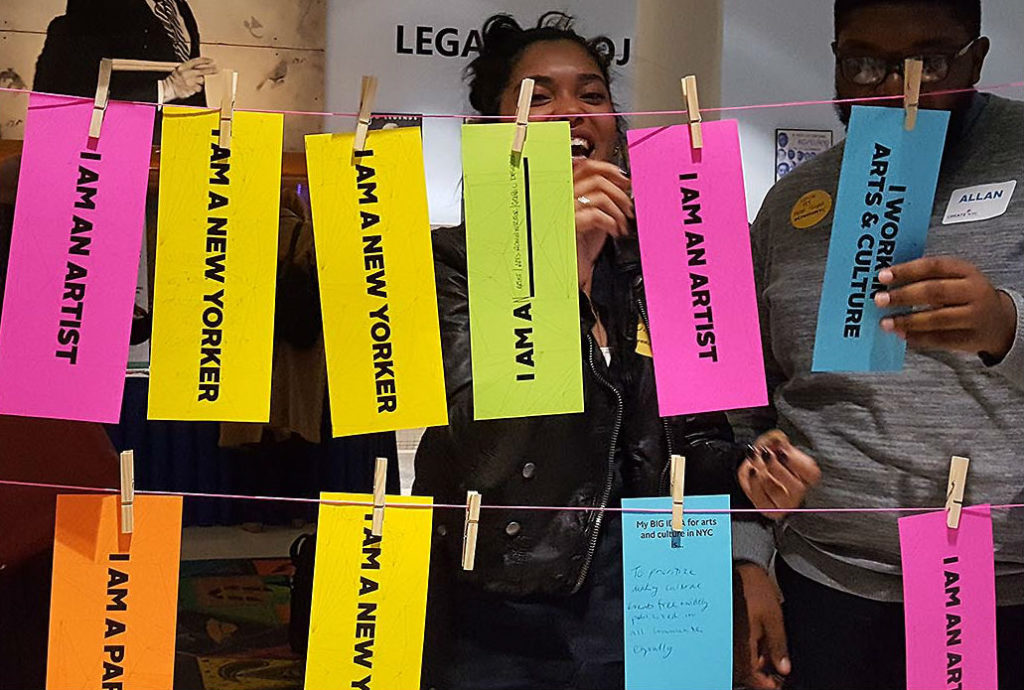Art World
40 Percent of New York Artists Can’t Afford Their Art Supplies
That eye-popping fact, and more, comes from the just-released report "What We Learned."

That eye-popping fact, and more, comes from the just-released report "What We Learned."

Sarah Cascone

As New York City’s Department of Cultural Affairs (DCA) continues to develop Create NYC, the city’s first comprehensive plan for overseeing the city’s arts and culture resources, due to City Council come the end of June, it has released the findings of its recently concluded public engagement phase. As you might expect, respondents have painted a grim picture of New York’s affordability for artists.
Here’s a fact for you: A full 40 percent of responding arts and culture workers said they were unable to afford art supplies and tools. An affordable home and work space is a priority of 90 percent of arts and culture workers—unsurprising given the long waiting lists for affordable artist housing.

A graphic from “What We Heard.”
The report, titled “What We Heard,” claims to be based on feedback from 188,000 New Yorkers, gathered between September 2016 and April 2017, both in person and online. There were workshops, focus groups, interviews, and surveys.
Create NYC found that “New Yorkers value arts and culture—and they want more of it,” according to the report. Among its key findings were that city residents want cultural resources spread more evenly across the city, including to less prosperous neighborhoods, and that NYC residents want the staff of cultural institutions to reflect the diversity of the city—an established goal of DCA commissioner Tom Finkelpearl.
A full 75 percent of respondents said that they wanted to attend more arts and culture activities, and half said that financial constraints kept them from participating in the arts as much as they would like. The city’s highest income earners participate 20 percent more in cultural activities than those at the bottom of the economic ladder.
“Many low-income community members don’t feel empowered to engage in the variety of arts and culture opportunities in NYC,” said one public housing resident from Queens, quoted in the report. “More needs to be done to bring the arts to low-income communities, and in bringing low-income community members to prestigious arts and culture institutions.”
As one might expect, concerns varied across boroughs. According to the report’s tally, while Manhattanites were most worried about smaller organizations getting overshadowed by cultural giants, Brooklynites were concerned about gentrification and displacement. In the Bronx, the top priority was maintaining the borough’s unique culture and rich heritage. Queens was thinking about diversity, and Staten Island wanted improved transportation to increase access to the arts.
In response to all of these issues, Create NYC has already come up with proposals addressing the concerns of its citizens, with a particular focus on affordability and accessibility.
If you weren’t able to submit your feedback during the public engagement phase, DCA is still open to your input—the current proposals can be reviewed and rated through May 31, allowing the general public to “identify what is most important to you and help make sure your priorities are reflected.” Finkelpearl will also be holding “CreateNYC Office Hours: What We Heard” events in all five boroughs.
“Beyond the proposals contained in What We Heard, the process of coming together, engaging in dialogue, and listening to New Yorkers from all walks of life has been transformative,” said Finkelpearl in a statement. “The publication of CreateNYC will mark the beginning, not the end, of this deeper conversation.”